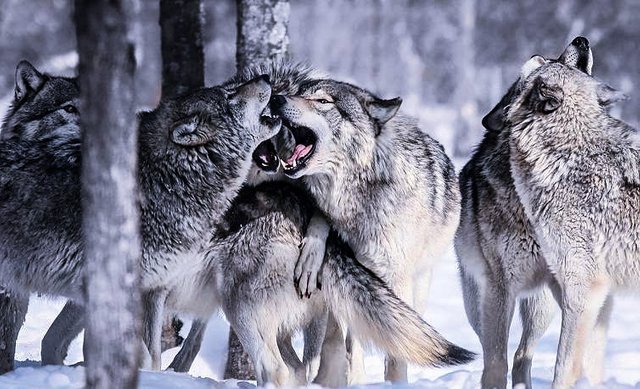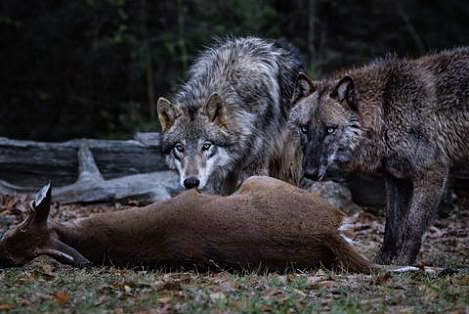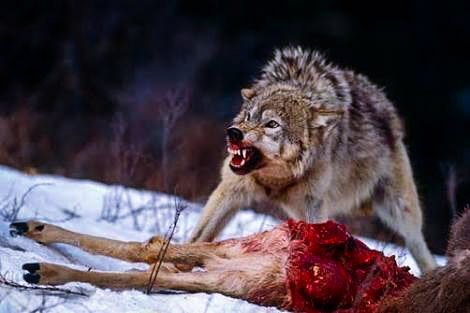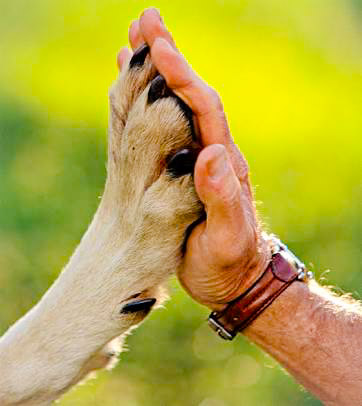Daily Celestial Challenge By @Sirknight Tuesday Theme : Animal Kingdom
Hey Guys
Whats upp
This contest is started by @sirknight . This contest is a great contest . In this contest you must have quality of your blog an also the quantity .
This is a contest of day by day . Having lots of fun. Thank you @sirknight for making this community and contest.
Tuesday Theme : Animal Kingdom
The blog is about Gray Wolfs.
The Gray Wolf (Canis lupus) is known for its furious appearance, incredible chasing capacity, and pack conduct. With a wail that can travel awesome separations through the wild, a delightful layer of hide, and the capacity to adjust to a bunch of conditions, the wolf is likewise an animal that has assumed a noteworthy part in numerous legends and tall tales.
Gray wolves, otherwise called "timber wolves" or "normal wolves," are the biggest individuals from the wild canid family. The normal measures in the vicinity of 3.5 and 5.5 feet long, and weighs around 80 pounds. In spite of their name, a wolf's hide can run in shading from relatively unadulterated white to dark. The most well-known shade is brownish dark colored.
Gray wolves are social creatures, and shape packs of up to 12 individuals, for the most part comprising of an atomic family. Wolf packs contain a prevailing, or "Alpha" male and female, their posterity, and different wolves not identified with the overwhelming pair. The greater part of the wolves have a rank that decides their parts and order in the pack. Wolves are notable for their particular sound: the wail. This one of a kind clamor can go for a few miles. Wolves cry for various reasons, incorporating correspondence with different packs and with their own pack over long separations, to accumulate a pack for a chase, to caution off gatecrashers, or to pull in mates.
Wolf mating season is from January to February and is normally constrained to the alpha combine, in spite of the fact that guys will some of the time mate with subordinate females also. The alpha female will have litters of up to 6 pups every year. Amid their first months, pups are totally reliant on their mom's drain. They are bit by bit weaned so when they are seven months old, they are prepared to begin chasing with the grown-ups. Raising the wolf pups is a duty shared by all individuals from the pack, and youthful wolves will ordinarily remain in their pack for a few years. Inevitably, the youthful wolves will leave to join different packs, or discover a mate and shape their own particular packs. A wolf's normal life expectancy is 6-8 years, in spite of the fact that the record wolf life traverse is around 20 years.
Gray wolves once had one of the biggest scopes of any species, outperformed just by people. It crossed all through Eurasia, North America, and Africa, covering the whole mainland northern half of the globe. As of now, the dim wolf possesses a decreased segment of its range, to a great extent because of human movement and living space devastation. Information recommends that there were up to no less than 400,000 scoundrels., yet by and by there are just around 9,000 in the United States.
Gray Wolf Facts and Trivia
Wolves are regularly the pinnacle predators in their range, tested just by tigers and people.
The female alpha wolf makes a lair and remains with her offspring for half a month, while different wolves from the pack bring her sustenance. Following half a month pass by, the female alpha rises for a brief span to locate her own particular sustenance, yet comes back to the cave instantly after.
Wolves are monogamous, they remain with a similar mate forever.
The growth time frame for a wolf is just around 63 days.
A wolf pup's eyes open 15 days in the wake of being conceived.
Gray wolves create solid bonds between the kindred two-timers.
In colder locales, wolves can lessen the stream of blood close to their skin to moderate warmth.
Wolves have exceptionally thick external hide in the winter, with shorter underfur and long, coarse guardhairs. They will shed a large portion of their underfur and some protect hairs in the spring, and afterward develop the hide back in the fall.
Wolves more often than not have longer hair on their back front quarters and neck, which nearly shape a peak.
A wolves winter hide is particularly all around adjusted to the frosty, and can help it serenely withstand temperatures of up to - 40° when nestled into. Wolf hide does not gather ice when warm breath is consolidated against it.
Female wolves commonly have smoother hide than guys.
As a wolf ages, the hair on the tip of the tail, nose, and temple may turn white.
The gray wolf's feeling of smell is moderately powerless contrasted with some chasing pooch breeds; however their sound-related observation is sufficiently sharp to hear the fall of clears out.
Wolves essentially utilize their chasing vitality to target expansive hoofed creatures like deer, moose, buffalo, mountain goats, sheep, elk, and caribou. In spite of the wolves' to a great degree intense chasing abilities, the majority of the creatures they stalk in the end escape. Wolves are likewise crafty seekers, and will target little prey on the off chance that it is accessible to them.
Wolves will pursue their prey in the event that it escapes, and are great sprinters, equipped for hitting rates of up to 38 miles for every hour. They are likewise profoundly skilled separation sprinters, and have been known to pursue deer up to 12 miles.
Wolves can eat as much as 22 pounds of meat in one sitting. Eating extensive sums after a major execute in fundamental in light of the fact that their chases require so much exertion and are not regularly fruitful.
Wolves can go longer than seven days without eating, with one known instance of a wolf getting by for 17 days without sustenance.
Wolves have 42 exceedingly concentrated teeth. Their canines, or "teeth," measure around 2-1/2" long, and they additionally have huge molars for pounding and granulating bones. The jaws of a wolf are to a great degree capable, and the wolf has a gnawing limit of in the vicinity of 1,000 and 1,500 pounds for every square inch.
Dark wolves were chased about to eradication in the mainland U.S. because of the dangers they postured to human security and domesticated animals. Today, their populace is for the most part bound to northern districts with meager human populaces and zones to which they have been reintroduced, similar to Yellowstone.
Wolves can flourish in an assortment of situations from the tundra to the forested areas, woods, fields, or even leaves. Wolves require huge zones equipped for supporting stable populaces of their prey. The scope of a wolf pack normally changes from 80 to 300 miles, contingent upon the quantity of prey species possessing the district. In outrageous northern districts, domains can cover more than 1,000 square miles.
Wolves basically utilize their chasing vitality to target extensive hoofed creatures like deer, moose, buffalo, mountain goats, sheep, elk, and caribou. In spite of the wolves' to a great degree intense chasing abilities, the vast majority of the creatures they stalk in the end escape. Wolves are additionally crafty seekers, and will target little prey on the off chance that it is accessible to them, for example, rabbits, snakes, mice, winged animals, fish, and beavers.
Wolves can go longer than seven days without eating, with one known instance of a wolf making due for 17 days without sustenance.
Wolves have 42 very specific teeth. Their canines, or "teeth," measure around 2-1/2" long, and they likewise have expansive molars for pulverizing and pounding bones. The jaws of a wolf are to a great degree intense, and the wolf has a gnawing limit of in the vicinity of 1,000 and 1,500 pounds for each square inch.
Wolves and People
For Native Americans, wolves were a unique animal that merited most extreme regard. They were known as a manual for the profound world, and accordingly all around regarded. Local Americans appreciated the boldness and persistence of wolves, and attempted to mimic them. A few clans gave the greater part of the credit of their chasing capacity to the wolves, saying they figured out how to chase by viewing the wolves.
Local Americans felt that they likewise had a great deal just the same as the wolves. Both watched over their family and shielded them from threat, both chased as a profession, and both were exceptionally social. Because of these likenesses, local Americans felt a profound and indistinguishable bond with the wolves.



